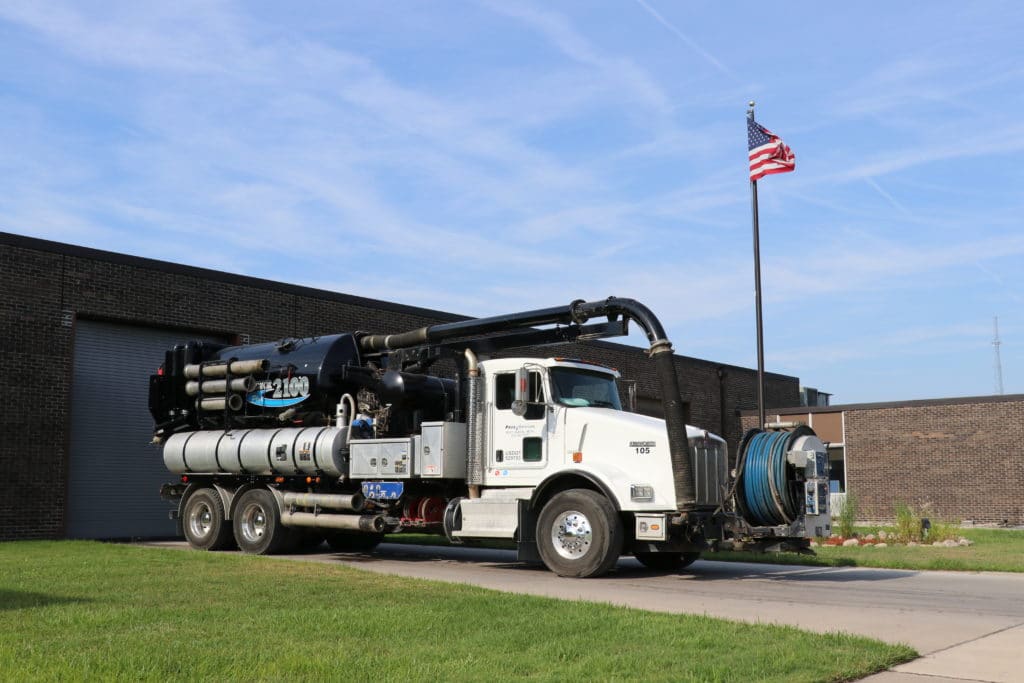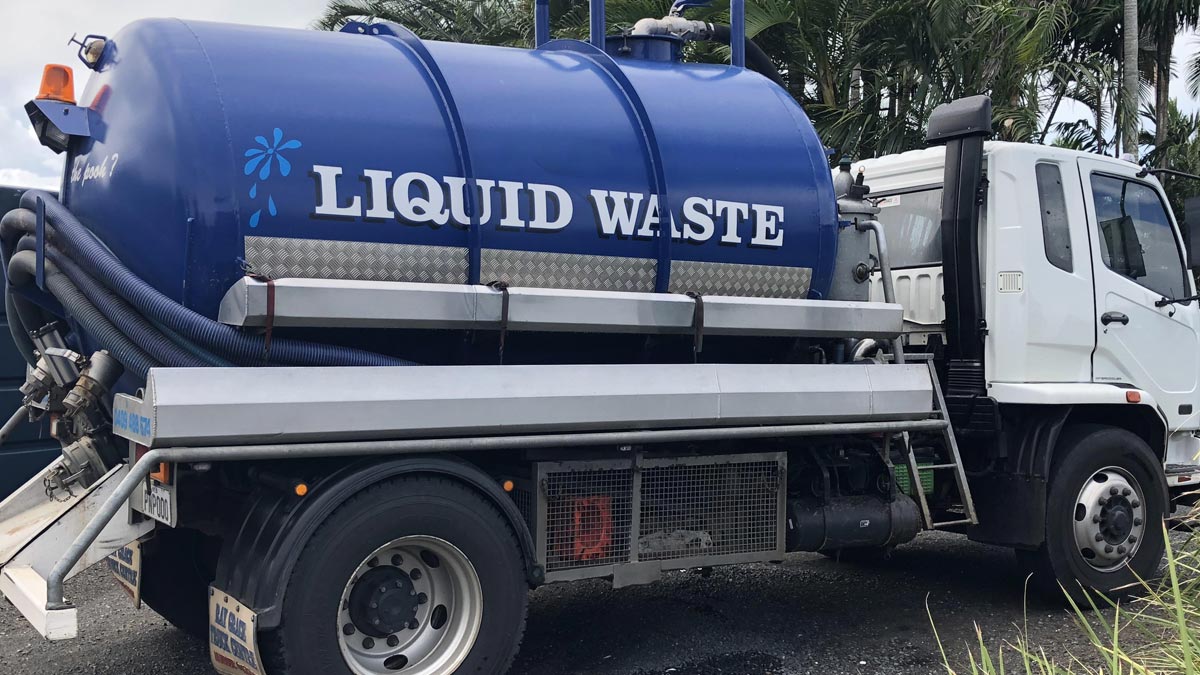Specialist Liquid Waste Removal Melbourne: Maintaining Your Setting Tidy
Specialist Liquid Waste Removal Melbourne: Maintaining Your Setting Tidy
Blog Article
Exactly How Fluid Garbage Disposal Works: A Comprehensive Review of Techniques and Technologies Used

Summary of Fluid Waste Kind
The complexity of fluid waste types requires a detailed understanding of their characteristics and ramifications for disposal. Fluid waste can generally be categorized right into numerous kinds, including commercial, local, agricultural, and dangerous waste. Each group exhibits distinctive residential or commercial properties, needing specific management techniques to alleviate ecological and health risks.
Industrial fluid waste originates from manufacturing procedures and commonly consists of a series of contaminants, such as hefty steels, solvents, and organic compounds. Metropolitan liquid waste, mostly consisting of wastewater from houses and commercial establishments, includes raw material, nutrients, and virus (industrial wastewater treatment). Agricultural liquid waste, including overflow from farms, may include plant foods, pesticides, and pet waste, posturing risks to water quality and ecological communities
Harmful fluid waste is identified by its toxicity, reactivity, or possible to cause damage. This group consists of compounds like acids, bases, and particular chemicals that require rigorous handling and disposal procedures. Comprehending these diverse fluid waste kinds is vital for establishing reliable disposal methods and ensuring conformity with ecological policies. Proper classification and characterization are important for implementing ideal therapy techniques and minimizing the unfavorable impacts on public health and the environment.
Physical Treatment Methods

Testing is the preliminary step, where larger fragments and debris are eliminated from the liquid waste using screens or grates. In sedimentation tanks, larger bits resolve at the base, developing a sludge layer, while the cleared up liquid can be additional dealt with.
Purification is an additional necessary approach that involves passing the liquid via permeable products, such as sand or membranes, to catch smaller particles. This step improves the top quality of the fluid, making it ideal for succeeding therapy processes.

Chemical Therapy Techniques
Chemical treatment techniques are vital for properly taking care of fluid waste, particularly in resolving liquified and colloidal pollutants that physical approaches might not appropriately eliminate. These strategies use various chemical agents to counteract, precipitate, or transform unsafe materials right into less damaging kinds.
One common technique is coagulation and flocculation, where chemicals such as alum or ferric chloride are added to advertise the gathering of put on hold fragments. This procedure enhances sedimentation, enabling easier removal of the resulting sludge. In addition, oxidation processes, using representatives like chlorine or ozone, are employed to break down complicated natural compounds and virus, making the waste much safer for discharge or additional treatment.
Neutralization is another essential method, which changes the pH of acidic or alkaline waste streams to neutral degrees, stopping prospective harm to downstream systems and the atmosphere. Additionally, progressed oxidation processes (AOPs) utilize mixes of oxidants and ultraviolet light to break down consistent contaminants, accomplishing a higher degree of treatment performance.
Organic Therapy Processes
Biological my link therapy procedures play a critical function in the monitoring of fluid waste by utilizing microorganisms to decompose raw material and minimize contaminant degrees. These procedures can be extensively categorized right into anaerobic and aerobic treatments, each employing details microbial communities to accomplish effective waste degradation.
Aerobic treatment entails the usage of oxygen to promote the malfunction of natural products by germs. This procedure is frequently implemented in activated sludge systems, where aeration tanks give a helpful setting for microbial growth, causing the oxidation of natural pollutants. The resultant biomass can be divided from treated effluent with sedimentation.
On the other hand, anaerobic therapy occurs in the lack of oxygen, counting on different bacteria to damage down raw material. This method is especially beneficial for high-strength waste, as it generates biogas, a sustainable energy resource, while decreasing sludge manufacturing. Technologies such as anaerobic digesters are frequently utilized in commercial and municipal applications.
Both aerobic and anaerobic biological treatments not only decrease the environmental influence of fluid waste however also help with source healing, making them essential parts of lasting waste monitoring methods. Their efficiency, flexibility, and effectiveness support their prevalent implementation throughout different markets.
Emerging Technologies in Disposal
Cutting-edge approaches to fluid waste disposal are quickly developing, driven by improvements in modern technology and an increasing focus on sustainability. Amongst these emerging innovations, membrane layer bioreactors (MBRs) have actually obtained traction for their ability to incorporate biological treatment with membrane purification, resulting in top quality effluent that can be reused in various applications. MBRs enable smaller sized impacts and extra efficient operations compared to conventional systems.
Another appealing growth is making use of anaerobic digestion incorporated with nutrient healing innovations, which not only deals with liquid waste however additionally creates biogas and recovers useful nutrients like nitrogen and phosphorus. This double advantage improves source effectiveness and reduces ecological influence.
Additionally, advanced oxidation procedures (AOPs) are being adopted for the deterioration of intricate organic contaminants. These methods use effective oxidants and catalysts to damage down pollutants at the molecular level, using an extremely effective option for tough waste streams.
Additionally, the combination of synthetic intelligence and device learning in waste monitoring systems is enhancing functional efficiency and predictive maintenance, leading to decreased costs and enhanced ecological compliance. These modern technologies mirror a substantial shift towards more sustainable and reliable fluid garbage disposal practices.
Conclusion
In verdict, reliable liquid waste disposal requires an extensive understanding of various strategies and innovations. By continuously advancing these techniques, it comes to be feasible to deal with the growing challenges associated with liquid waste, ultimately contributing to environmental defense and resource recovery.
Fluid waste disposal find more information is an important aspect of ecological administration, needing a thorough understanding of numerous strategies and modern technologies customized to various waste types. Fluid waste can generally be classified into numerous types, including commercial, metropolitan, farming, and unsafe waste. Agricultural fluid waste, including overflow from farms, may include plant foods, pesticides, and pet waste, positioning dangers to water quality and ecosystems.
Various physical therapy methods play a vital duty in managing liquid waste efficiently - industrial wastewater treatment.In conclusion, effective fluid waste disposal demands a comprehensive understanding of various visit this web-site strategies and technologies
Report this page